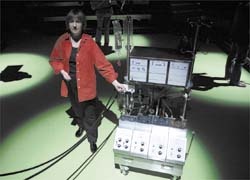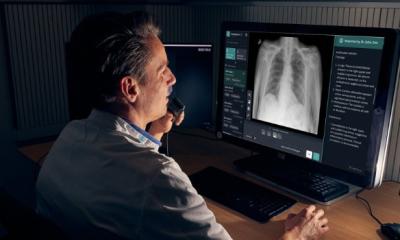Seeking a compatible heart
Another kind of theatre
Transplant surgeons use checklists to establish whether donor and recipient hearts are compatible - almost like people looking for suitable partners.

Speed dating and internet dating involve a comparison of people’s own profiles with those of potential partners. Everyone, surgeons, patients, those running dating agencies and people seeking partners want the highest possible match and fear rejection. At the Schauspielhaus Zurich (Zurich Playhouse) all these players have united in the performance of Blaiberg and sweetheart19.
Dentist Philipp Blaiberg, was the second person ever to receive a heart transplant (the first, Louis Washkansky, survived the operation for less than three weeks and is almost forgotten).
Sweetheart19 is a typical nickname used on internet chat rooms and singles websites. Docu-drama producers Helgard Haug, Stefan Kaegi and Daniel Wetzel, working under the label Rimini Protokol, have combined Blaiberg and sweetheart19 to bring on stage a heart transplant patient; cardiac technician; a woman with donor card, two dating organisers, and a vet. These are not actors, but ‘real people’ acting out their own lives - reality which, often interwoven and entangled, is turned into theatre.
On stage are just four stands overhung with four video screens, to alternately represent an operating theatre and dance hall; four spotlights with beam spots suggest operating lamps, four rows of coloured floor lights suggest a dance floor.
A simulated heart operation is transmitted via video and Heidi enters, stops the transmission and tells her story: suffering atypical amyloidosis, she first had received a mechanical support system, then a donor heart. Now she must trick her immune system with drugs for a lifetime to beat possible rejection. Next, Renate appears.
A cardiac technician at the Zurich Triemli-Spital, she has brought a heart-lung machine and delivers medical wisdom live, whilst experts, surgeons and cardiologists deliver statements via video: ‘A transplant patient feels no cardiac pain’ (nerves have been severed), or ‘patients are not properly cured, just less ill’. To stop a donor heart beating and ready for transportation, Renate uses five litres of Custodiol (a drug that protects organs) and seven minutes of her time - the same time that clients using Nick’s speed dating events have to meet a potential new partner. When the session is over, a bell sounds; ladies remain seated, gents rise and seek another possible partner. ‘Seven minutes can be a long time,’ explains Nick, who, if required, helps with questionnaires. There are plenty of questionnaires on the internet, which is where Crista D. - willing to give her heart away once to a new partner and twice, on her death, for a transplant patient - is seeking a partner. Doctors will check her blood and tissue compatibility; for now, she checks for visual and character compatibility of people on an online dating agency.
Jeanne joins them. She runs such an agency to bring Swiss men with Russian women together. Each standing in front of a stand, the four people talk simultaneously. After two (not seven) minutes a bell sounds and they swap places. Again they talk, but not to one another. The people and levels they represent (heart disease, a search for a partner; the affected, the professional) remain finely separated. Only once do they come together, to dance along at a pensioners’ tea dance, transmitted via video. The audience must make all the connections; Haug, Kaegi and Wetzel rely on everyone’s ability to make associations and on the strength of the individual stories. In fact, they rather try to confuse the audience with the arrival of Hansueli, microbiologist and professor of veterinary medicine, who specialises in pig diseases. He brings along a pig’s heart, which is not used to supply biological heart valves, but is later fried by Jeanne.
So, whilst everyone remains separate on the stage/in life they come together in this virtual world. Here everyone could recreate themselves, but they limit it to shape and hairstyle and otherwise stay who they are: patient, cardiac technician, dating agency owner. Only Crista D. takes on the identity of her deceased son (a suicide). Together they are to save a life by transplanting a heart, but the mission fails. While patient and perfusionist dance together, Nick compares the dating agencies used by Crista D. and run by Jeanne. Statistically, he says, it takes 60 contacts to establish a relationship.
So, in the same way that Heidi’s mechanical heart support system only supported one half of her heart, the entire story seems half-hearted. It suggests that private happiness can be planned in the same way as a surgical intervention - despite the fact that Heidi’s new lease of life is the result of coincidence: If her cancer had actually been detected as the underlying cause, doctors would never have short-listed her for a transplant. At the end of the performance, Nick tries his luck as a rodeo-rider on a bull with a pig’s head. The smell of fried meat wafts through the hall and everyone takes bets on when the rejection will occur. What is bound to happen happens: Nick falls off and Heidi quickly takes her medication.
The performance will run from 10-14 October, in Berlin. Details: www.hau-berlin.de
01.05.2006









